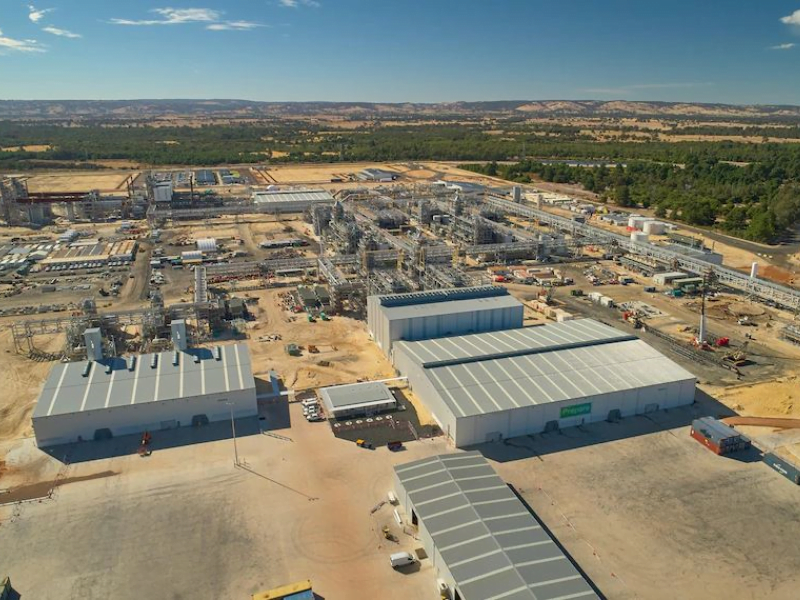A lithium hydroxide plant in Kemerton, Western Australia will double its lithium hydroxide production after confirming expansion plans.
Collectively, the plant will produce 100,000 tonnes of battery-grade lithium hydroxide from spodumene when the expansion is complete, with first production on the new processing trains expected in 2026.
Work on the third and fourth production trains will commence immediately. The cost of the two new trains is estimated at US$1 billion (AU$1.5 billion), although the final figure could be higher given reports of budget blowouts on the initial two trains.

The plant is operated by California-headquartered Albemarle and is part of the MARBL lithium joint venture with Perth-based Mineral Resources.
Albemarle has an 85 per cent stake in the two existing Kemerton production trains. It increased its interest from 60 per cent in February as a part of a broader restructure of MARBL.
The peak construction workforce is expected to be around 1,000, while the total operational workforce is expected to increase from 480 to 850 people.
The first two trains of the Kemerton facility began operations in mid-2022, after initially targeting 2021 to begin production. Labour shortages due to the COVID-19 pandemic led to delays in the construction of the plant.
Western Australian Premier Mark McGowan on Wednesday said that the expansion is great for the region, state, and Australia.
“Albermarle’s lithium hydroxide plant in Kemerton is one of the best examples of what WA has to offer the world when it comes to battery and critical mineral supply chains,” he said.
“For years to come, Albemarle’s lithium hydroxide plant will support local jobs, grow advanced manufacturing in the South-West and deliver economic benefits for the whole state.”
Situated at the Kemerton Strategic Industrial Area in the south-west of the state, the 89-hectare lithium hydroxide facility receives spodumene ore concentrate from the Talison Lithium Greenbushes mine.
The first production of battery-grade lithium hydroxide in Australia took place in May 2022 at a separate joint venture facility owned by Tianqi Lithium Energy Australia (TLEA) in WA.
TLEA is majority owned by Shenzhen-listed Tianqi Lithium, with the remaining share held by local critical minerals firm IGO. Talison Lithium, meanwhile, is majority owned (51 per cent) by TLEA, with Albemarle holding the remaining share.
In mid-April, a joint venture between IGO and Andrew Forrest’s Wyloo Metals secured land from the state government for the construction of a a nickel refinery and a nickel dominant precursor cathode active material plant. Capital expenditure estimates on the project range between $600 million and $1 billion.
Australia currently produces 53 per cent of the world’s lithium, with Western Australia the source of almost all of these exports.
According to a report commissioned by the Future Battery Industry Cooperative Research Centre, Australia’s diversified battery industry is expected to be worth $16.9 billion by 2030.
The federal government will release a National Battery Strategy later this year.
Do you know more? Contact James Riley via Email.

